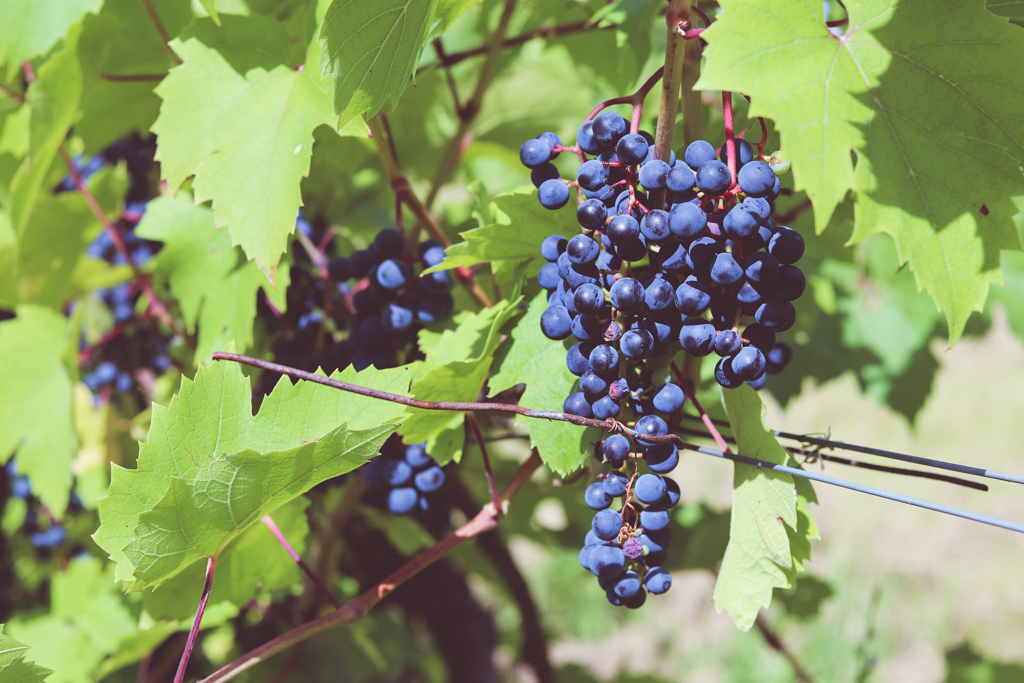Hybrid grapes are seen by many as the store-brand version of real-deal grapes. Sure, they have some notable benefits: they’re generally less expensive, and in many ways just as good as the name brand versions. But they don’t have the cache, street cred and long history of their Vitis vinifera counterparts.
But in New York—and other regions of the Northeast and Midwest where real-life growing conditions often fail to be the sun-dappled fantasy that growers across California and Europe work with—the widespread use of hybrid grapes in solo or vinifera-blended bottling has become standard practice.

Climate change has even made hybrids more palatable in regions that would never have considered them in decades past. The European Union officially welcomed hybrid grapes to the party in 2021, and Bordeaux, Champagne and other regions gave producers the greenlight to plant hybrids.
European regions are touting hybrids as a way for growers to farm more sustainably, reduce spraying regimens and produce decent crops amid extreme weather. “About time,” many New York producers think.
“I started my career in the Finger Lakes in 2009, where hybrid varieties were part of the landscape and seemed like a natural extension of viticulture,” says Edward Miller, winemaker at Glenora Wine Cellars. “Upon leaving to work in other major winegrowing regions I was honestly surprised by how little diversity I found in varieties grown and the negative views held about hybrid grapes, usually with little to no direct experience with them.”
But, as any New Yorker who has grown hybrids or tried wine made from hybrid grapes, he found not all hybrid grapes are created equal.
Defining Hybrids + History
Hybrid grapes emerged in the U.S. after would-be vintners who settled here from Europe found that their Vitis vinifera grapes failed to thrive, but that local grape species (Vitis aestivalis, Vitis labrusca, Vitis repestris and Vitis rotundifolia) didn’t live up to their grand cru expectations.
The first hybrid was the result of an accidental crossing of Vitis vinifera and Vitis labrusca conducted by a gardener named James Alexander in 1740. The discovery led to a boom in interest, research and investments. Today, between teams of researchers at Cornell University and their colleagues at University of Minnesota and University of California Davis, growers in New York have access to dozens of hybrids specifically bred to resist disease, withstand weather extremes—and they taste great.
“The creation and propagation of new grape varieties is an important branch in the overall research of how to make grape growing more sustainable, both environmentally and financially, and adaptive to changing environments,” notes Miller. “We have more or less frozen the major European grape varieties in time for the last several hundred years, genetically speaking. Grapes are propagated by cloning, and while mutations still do occur, think the Pinot family, it is not at the same rate and degree. All grapevine pests, on the other hand, have been evolving to better evade the grapevine’s natural defenses, in many ways forcing us to rely more and more on our various plant protection products.”
Read on for the hybrid grapes New York producers are especially bullish on.
Traminette for Reducing Spray Regimes, Flavor
Evan Miles, winemaker at Miles Wine Cellar in Himrod, grows 14 varieties across 70 acres.
Miles touts the white grape Traminette for its flexibility in the field and the cellar.
He notes that Traminette offers incredible “flavor and spice,” in the glass, while also loving its “ability to produce more” and the fact that “the winter damage is a lot less than their parent varieties.”
Seyval Blanc for Disease Resistance, Quality
Glenora’s Miller says that “overall, the white hybrids can make better stand-alone wines, while I prefer red hybrids blended with vinifera,” but he adds that there is “strong consumer interest in red hybrid varieties, and some winemakers are making great individual bottlings.”
His current favorite is Sevyval because “it grows well, is relatively disease resistant, can ripen a good crop, processes well, and has good potential to make a crisp, dry to off dry, white table wine for everyday consumption.”
Cayuga for Cold Hardiness, Flavor
Bully Hill Vineyards in Hammondsport has 90 acres, all planted to hybrids, but produces wine that is often a blend of vinifera, native and hybrid varieties.
“The goal is to put out the best possible wine every year, which is why blending is important for us,” explains Stephen Taylor, wholesale manager at Bully Hill.
Cayuga, a white grape developed by Cornell in the mid-20th century, is one of the best hybrids to grow in New York.
“It has the distinction of being loved by grape growers, winemakers and consumers,” Taylor says. “Like many hybrids it provides great cold hardiness and disease resistance while producing wines that are well structured with pleasing pear and melon notes.”
Bully Hill released Cayuga as a single varietal this year, and Taylor says, “It has been a big hit in our tasting room as well as the New York State market. Cayuga has a distinct and approachable flavor profile and we find consumers who like our semi-dry Riesling also feel at home with Cayuga.”
Vidal for Subtlety, Brightness
Winemaker Shawn Kime from Thirsty Owl Wine Company in Ovid works with 150 acres worth of Cayuga Lake grapes, including five hybrids. Kime says each one has its place—including underdog Cayuga White, which he believes “doesn’t get the credit it deserves.”
But Vidal takes the top prize for its “subtle fruitiness and the way it retains nice acidity, which makes a good friendly wine. He’s found that anyone who loves a dry Riesling will appreciate a dry Vidal.
“Name recognition has been a problem in the past for Vidal and several other hybrids,” Kime says, “but that is changing.”
Vignoles for Complexity and Flavor
Milea Estate Vineyard in Staatsburg has 19 acres of 11 varieties under vine, and the team sources fruit locally as well, says general manager Russell Moss.
One of his favorite hybrids is the white Vignoles, but to produce a truly great wine, it needs to be treated with care.
“I use special techniques in the vineyard and the cellar to accentuate the thiols,” Moss explains. “I learned the techniques in New Zealand and in grad school, and it leads to extremely expressive grapes, with aromas similar to Chenin Sauvignon Blanc, without the greenness.”
Treating the hybrids with “intention from soil to service, and the same attention to detail as vinifera,” allows them to sell the wines at $30+ a bottle, he notes.
“The Vignoles offers gorgeous complexity and a window into what can be done with hybrid grapes,” Moss says.
A Red Blend for Character
Chris Stamp, winemaker at Lakewood Vineyards in Watkins Glen loves how hybrids allow him to “reduce vineyard inputs” and boost climate resiliency. But, he adds, they also have to produce consistently high-level wines for him to plant them.
With 100 acres under vine, Lakewood grows one-third native Labrusca, one-third hybrid and one-third vinifera.
“On the red side, we feel like no one variety checks all the boxes, so we work with five to six varieties to get the character we are looking for,” Stamp says. “Our Long Stem Red is a blend of Baco Noir, Dechaunac, Leon Millot, Marechal Foch, Frontenac and Vincent. Each of these fills in a part of the puzzle.”
Is there one signature hybrid for New York? Nope. Instead, there’s a panoply of excellent options for growers and wine lovers alike, seeking delicious flavor, with a side of eco-friendliness.

